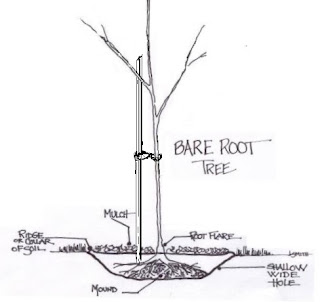 |
| Bring birds into your garden. |
Wet winter days beginning this week keeping most gardeners inside, I could not let rain fall on gardens that had not had a dressing of pig manure / sawdust that I have a stash of. Plants will not be taking the goodness in while not growing but the rain will take it down to where needed in readiness for the spring explosion of growth. As I work around the garden I see the plants that are making a move, most spring bulbs have pushed through some even flowering along local fence lines, pretty violets, pollyanthas and hellebore's are braving the cold here along with early camellias and Christmas cheer Rhododendron are flowering. After a few hard frosts in a row then a couple of milder frost free days plants get the urge to push buds open however it is the shortened hours of light that dictates the starting of a new growing season.
Gardeners need to be on interment terms with the weather we need to bend to it and learn how it affects our own gardens through all seasons, where wind chill comes in, the driest or bad draining areas and plant accordingly because weather makes no exceptions and plants can be lost if planted in the wrong conditions. We can create shelter and drainage where needed but Nature is still in charge if we do nothing at all nature will plant the right plant in the right place every time, one consolation is the more different weeds that come up in your garden means you have good growing conditions. Everything above the ground in your entire garden is determined by what happens below ground level.
Planting: Any deciduous tree or shrub whether bagged or bare rooted is best planted in winter when dormant and this is also when you get the best choices in Garden centers. Give the tree /shrub a good soak in a bucket over night before planting. Plant all trees,shrubs and hedging plants shallow as a shovel deep but make the radius of the hole at least twice as wide as deep. Loosen the soil with a fork below and to the sides of the hole and spread roots out over mounded soil at the bottom of the hole, the quicker roots leave the planting hole, spread and take hold the better. If a hole is dug too deep with a lot of organic matter added roots tend to stay put content to make feeder roots in one spot rather than search for what they need. A good stake put in while planting is essential especially with tall grafted trees, this helps to keep roots from moving while becoming established.
Mulch: The rain was welcome on my large leaf piles, moisture needs to get beyond the top of the pile which acts as a shield so I get the fork in and mix things up to let rain in and if not enough moisture after a few showers the hose will go on then a cover to keep wind out and get wet fungus working to turn leaves into mulch to add wonderful humus to soil.
Birds look for food and water during winter, if you supply both your garden will be visited but to be relaxed birds need food trays placed high close to a bush or a tree they can dart to if startled. I melt a pot of dripping and while still soft before hardening it is easy to mix bird seed into then fill a string bag like kiwi fruit and mandarins come in, birds will flock to it. Sugar water is always found by tui's but if you start it is only fair to birds that you continue.
Dahlias, gladioli, and peonies will be on offer this month, plant in good draining soil in a sunny spot, if you think there is a chance they would sit in cold, wet soil over winter they may rot, planting can continue until September. Dahlias can be covered and protected in damp sawdust until they start to shoot then planted out when all threat of frost is over.
Remember to continue protecting plants like Margarete daisies and pelargoniums from frosts with frost cloth as a cover above them, not touching. If they frost on the top just leave the frosted tops to protect the new growth beneath. This would not work further inland, it would be best to start nursing cuttings to be planted out when the frosts are over.
Moss on drive ways Two weeks ago I spread some inexpensive laundry powder on the thick moss growing along the shaded side of our drive and hey presto! it turned brown and died , I will leave it now in the hope it will discourage more moss growing during winter.
Manure: At this time of the year Lions clubs are filling stands with sawdust and sheep manure, volunteers clean out calving sheds and under shearing sheds to keep stands topped up for keen gardeners. I use the sawdust on wind free garden pathways and the sheep manure on the compost heaps. Sawdust can be used thickly on wet gardens as a weed suppressant as it helps to absorb excess moisture, but never on dry gardens.
Vegetables: On the coast start raising vegetable seeds for spring planting in a warm spot, under glass or plastic with ventilation spaces to circulate air and stop seeds going mouldy. Further inland where winters are harsher and longer germination will only happen on a heated seed raising pad so best to wait. If seeds are raised inside they will get leggy before it is time to plant out.
Cheers, Linda.
 |
| planting bare rooted trees. |









